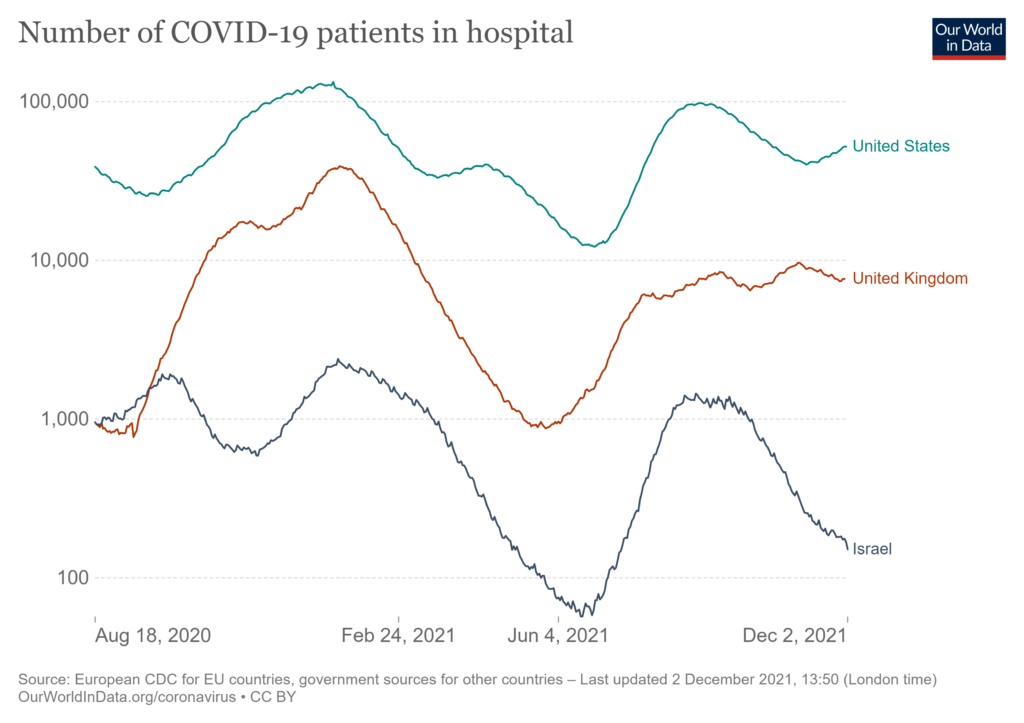Below is an updated chart suggesting the “demand curve” for covid-19 hospitalizations in the United States, United Kingdom, and Israel.
So far, none of these outcomes reflect the spread of omicron. Instead, the stubborn levels of demand in the US and UK demonstrate the ability of the Delta variant to find and infect those who are not vaccinated or are otherwise vulnerable.
The difference between Israel’s demand curve for hospitalization and the other two is the result of multiple factors. Israel benefits from a younger average age, more consistent community-wide vaccination, wider practice of non-pharmaceutical mitigation measures, and earlier more successful deployment of vaccines and boosters. Israel has focused intently on network-wide demand suppression for hospitalization.
While omicron seems to be highly contagious, there is not yet sufficient evidence to reach conclusions about the variant’s virulence or the efficacy of current vaccines. Given continuing high levels of demand related to Delta, as shown below, it would be reassuring to find that omicron does not prompt a significant surge in hospitalizations. But, again, right now, evidence is insufficient either way. [Here’s a very helpful December 3 overview from the Financial Times that I did not notice until December 5.]
We do know that in prior waves: the more infections, the larger the number of eventual hospitalizations until, too often, demand overwhelms local and regional health care systems — exceeding the capacity of health care professionals, medical goods, and available beds.
